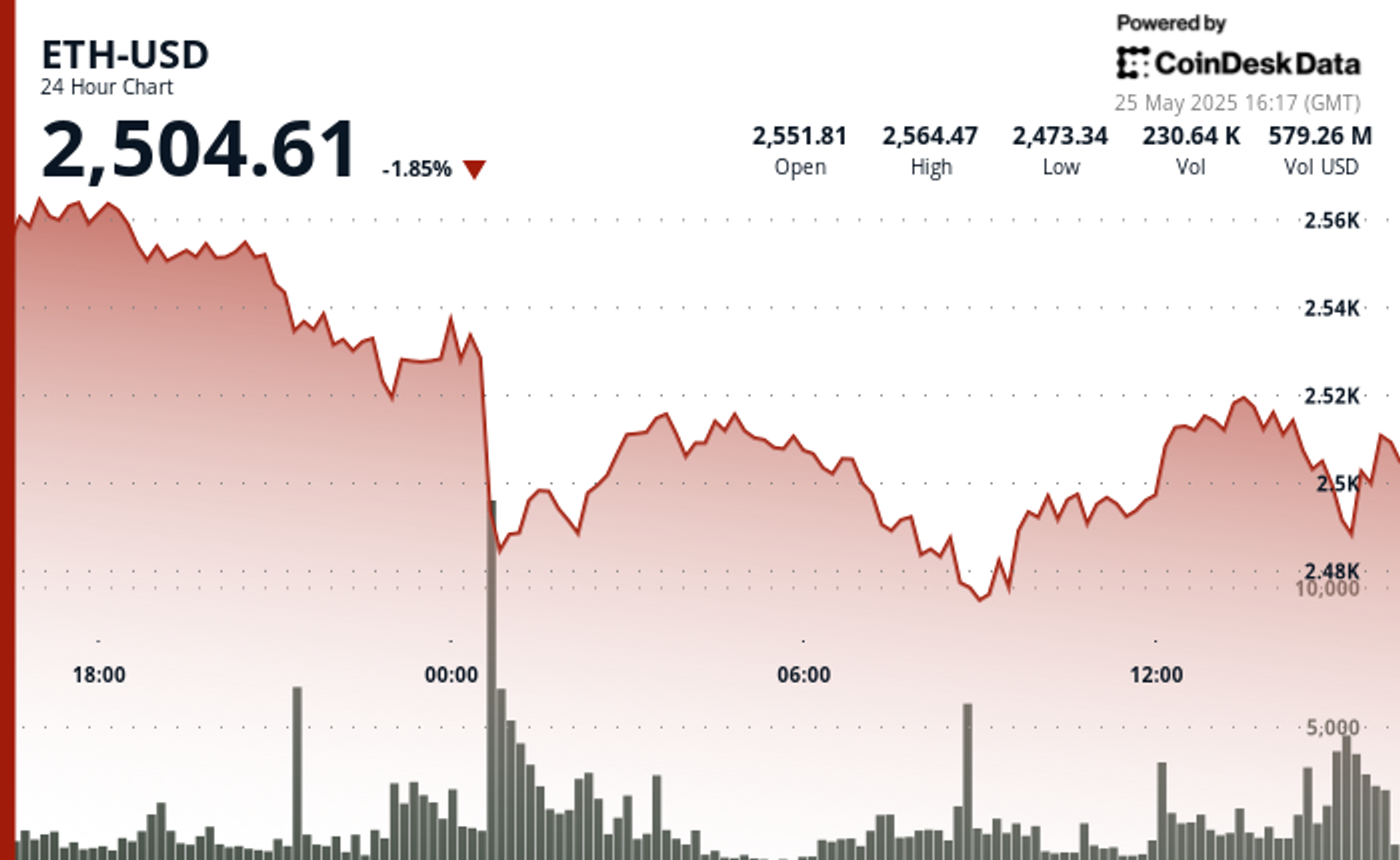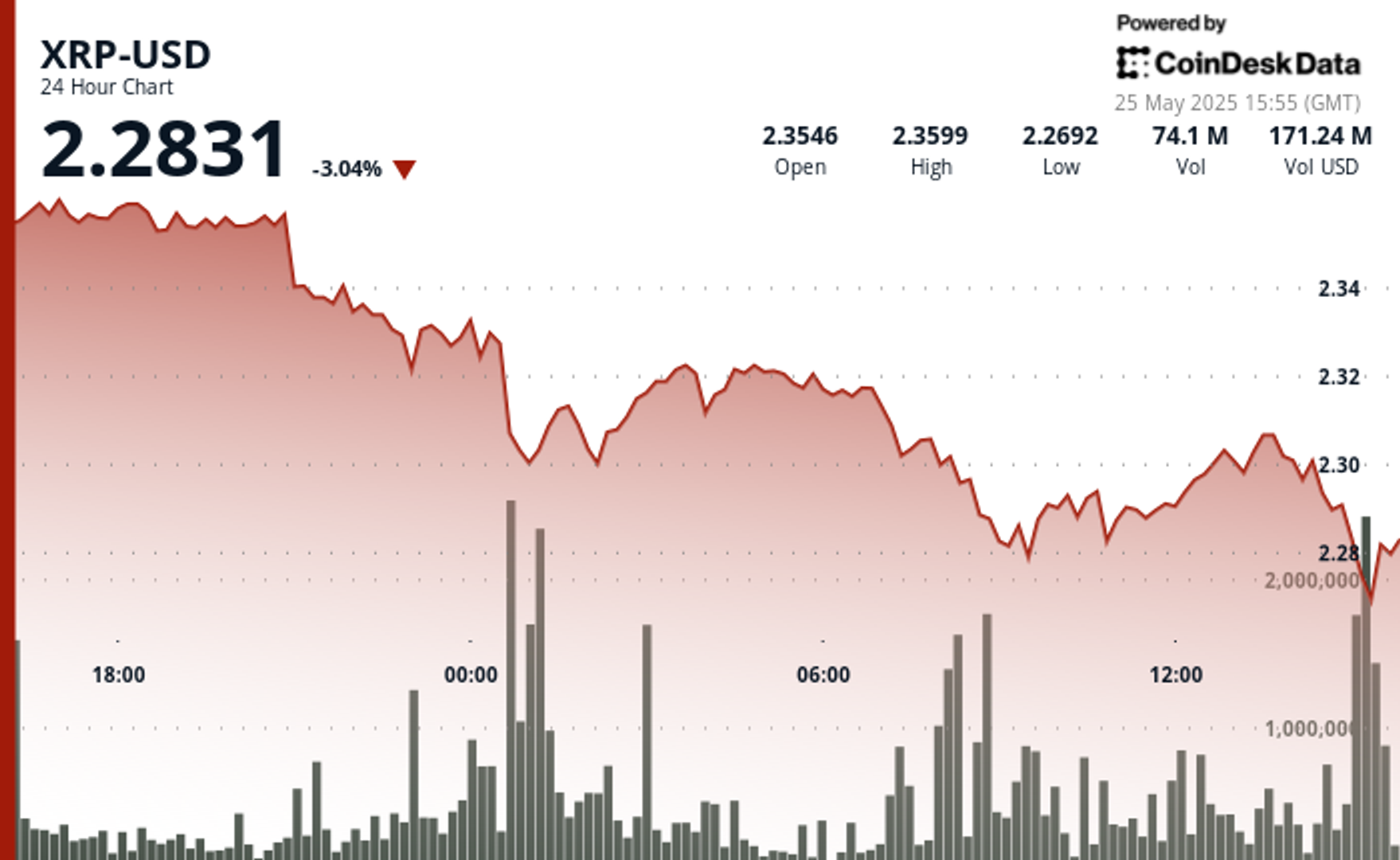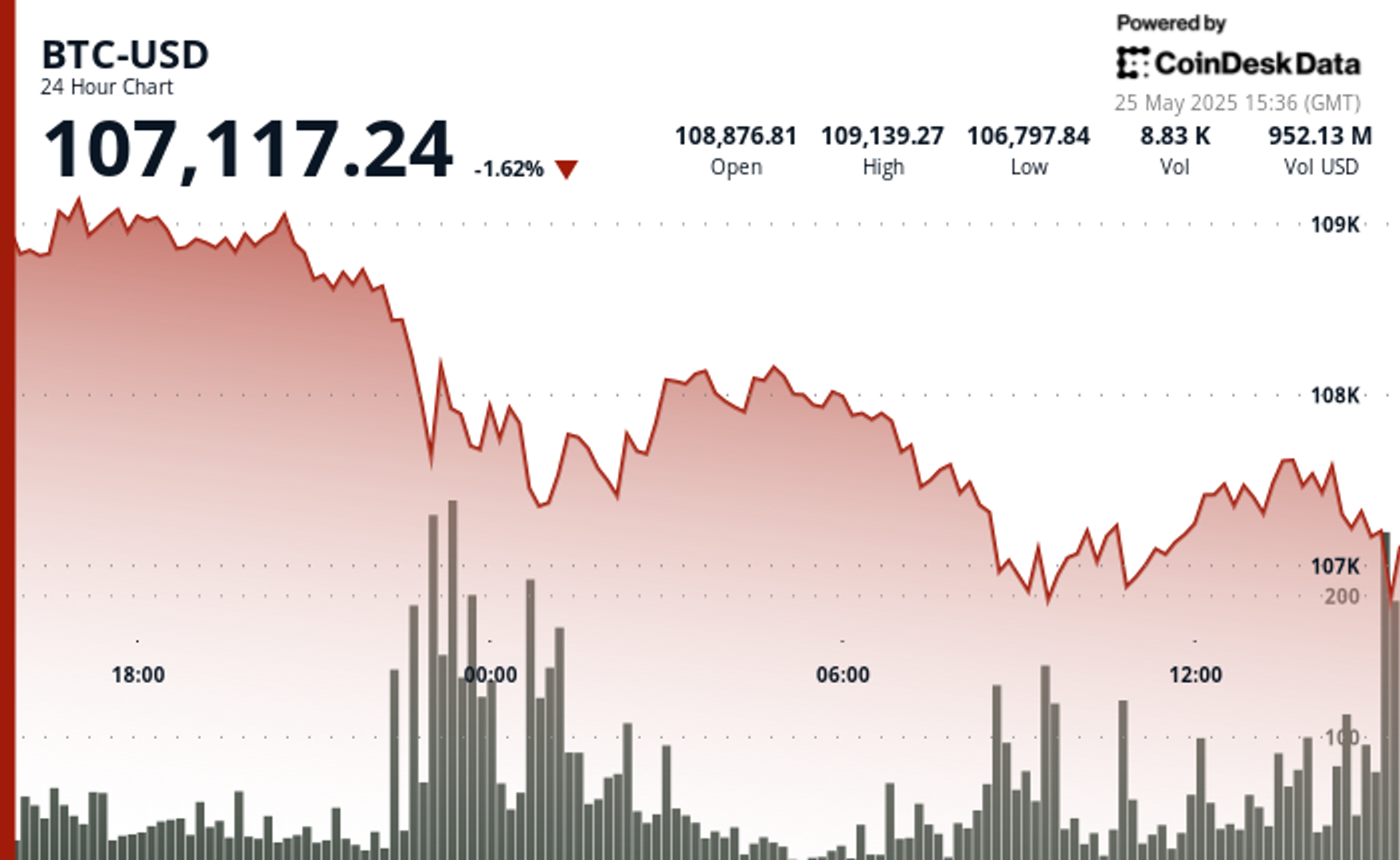Uncategorized
Why a U.S. Bitcoin Strategic Reserve Is Critical to Fending Off China

Finance is increasingly a weapon of war. United States policymakers and our allies focus too narrowly on macroeconomic tools like sanctions and promoting the dollar as a reserve currency when the modern front is evolving. Today, the real battles are being waged on smartphones and in the global currency markets.
China is waging a multi-decade plan to displace the United States’ greatest asset: the dollar. The dollar is critical to the United States’ economic and geopolitical power as the global reserve currency. Without it, our influence would weaken, and our debt would become a bigger problem. This is precisely what the Chinese Communist Party and the Kremlin want.
China and Russia have shed billions of dollars worth of U.S. Treasury holdings while growing their stockpiles of gold. Our sanctions, designed to separate countries from the «Western» economic system, are no longer enough of a deterrent for those who can control financial activity within their borders and project their power outward.
Authoritarian adversaries — including China, Iran and Russia — are actively building parallel cross-border economic systems that will pull into their orbits not only neighboring countries but also our allies who trade heavily with them.
For example, over half of businesses in Japan accept Alipay, while more than one-third accept WeChat Pay. This distribution gives two Chinese firms unprecedented visibility into the individual market transactions of Japanese consumers and businesses. It could allow China to disrupt Japan’s economy should tensions escalate, such as in a potential conflict over Taiwan.
How the U.S. can respond
China sees financial technology and cryptocurrency as tools to extend its financial power and surveillance globally. The United States must respond in two ways: export our financial technology and systems worldwide and embrace bitcoin as a strategic reserve asset instead of stifling innovation.
Lawmakers and politicians on both sides of the aisle, most notably President-elect Donald Trump, recognize the power of holding bitcoin on the nation’s balance sheet as a hedge against inflation. This direction would also strengthen U.S. resilience against economic challenges posed by China’s financial strategies.
The Federal Reserve, like many central banks, holds a diverse portfolio of reserve assets. As of 2024, this includes approximately $35 billion in foreign currencies and $11 billion in gold stock. These holdings demonstrate America’s economic strength and provide liquidity during financial stress. However, in our rapidly digitizing world, the absence of a native digital asset in this portfolio is becoming increasingly conspicuous.
With its global reach and growing adoption, bitcoin is the ideal candidate to fill this gap. Often called “digital gold,” bitcoin is a scarce commodity. The U.S. is the largest nation-state holder of bitcoin, having seized 210,000 coins from illegal actors. This gives the U.S. a first-mover advantage and could secure our economic future.
Critics may argue that bitcoin’s volatility makes it unsuitable as a reserve asset. However, this volatility will likely decrease as adoption grows and the market matures. In 2021, El Salvador recognized bitcoin as legal tender and began purchasing it as a treasury reserve asset. They have seen a 100% increase in value and have no intention of selling.
A multi-front war
The U.S. must recognize we are already in a multi-front war with China. One of these fronts is financial services, and crypto is a weapon in our arsenal. Losing this battle means global financial services and individual financial activity would be dominated by adversarial states focused on control, surveillance and dominance — and a continued attack on our currency.
Trump understands this, telling Bloomberg in July, “If we don’t do it, China is going to pick [bitcoin] up.”
Projecting American financial power also requires the government to empower, enable and encourage our private economic sector to interact with contested economies throughout the Indo-Pacific and beyond. Expanding the use of our payment systems, banks and dollars — even where it’s controversial — is essential.
Right now, our adversaries are winning because we aren’t even playing. They are exporting their systems, institutions and surveillance tools worldwide. Meanwhile, we’ve done little as TikTok, a serious threat to our national security, captivates an entire generation of Americans. We must do the same with financial technology because no disruption would be greater to our enemies.
The U.S. should more explicitly weaponize financial technology and crypto. For example, we should endorse decentralized financial technology that enables citizens of hostile governments like Iran to use smartphones to access USD-based stablecoins and payment services, in order to begin separating their economic activity from their government’s control. At its core, power is about control — not just of police or national security but of resources and economies.
The world is at a financial crossroads. The question isn’t whether digital currencies will shape the future but how we will adapt to this new reality. The U.S. can shape this future by embracing bitcoin as a reserve asset. The time for bold action is now, and the benefits for global financial stability and innovation could be profound.
Uncategorized
Ethereum Surges After Holding $2,477, Fueled by Very Heavy Trading Volume

Global economic tensions and trade disputes continue to influence cryptocurrency markets, with ETH showing resilience despite broader market uncertainty.
The second-largest cryptocurrency is currently navigating a critical technical zone between $2,500-$2,530, which analysts identify as immediate resistance that must be overcome for continued upward movement.
Institutional interest remains strong, with spot Ethereum ETFs recording consecutive days of positive inflows, signaling growing confidence from larger investors despite the recent volatility.
Technical Analysis Highlights
- 24-hour ETH price action revealed a substantial 3.5% range ($99.85).
- Sharp sell-off during midnight hour saw price plummet to $2,477.40, establishing a key support zone.
- Extraordinary volume (291,395 units, nearly 3x average) confirmed the significance of the support level.
- Buyers stepped in at the $2,467-$2,480 support band, confirmed by high-volume accumulation during the 08:00-09:00 period.
- Recent price action shows bullish momentum with ETH reclaiming the $2,515 level.
- Potential higher low pattern suggests the correction may have found its bottom.
- $2,520-$2,530 area remains the immediate resistance to overcome for continued upward movement.
- Significant bullish surge at 13:35 saw price jump from $2,515.85 to $2,521.79, accompanied by exceptional volume (5,839 units).
- Sharp reversal occurred at 14:00, with price dropping 5.07 points to $2,508.02 on heavy volume (4,043 units).
- Hourly range of 14.46 points ($2,508.02-$2,522.48) demonstrates market indecision.
External References
- «Ethereum Holds Above Key Prices – Data Points To $2,900 Level As Bullish Trigger«, NewsBTC, published May 24, 2025.
- «Ethereum Forms Inverse H&S – Bulls Eye Breakout Above $2,700 Level«, Bitcoinist, published May 25, 2025.
- «Ethereum Price Analysis: Is ETH Primed for a ‘Healthy’ Correction?«, CryptoPotato, published May 25, 2025.
Uncategorized
XRP Plunges Below $2.30 Amid Heavy Selling Pressure

Global economic tensions are weighing heavily on cryptocurrency markets as XRP experiences a significant correction amid heavy selling pressure.
The recent announcement of potential 50% tariffs on European Union imports by the US government has triggered widespread market uncertainty, with XRP falling alongside most major cryptocurrencies despite Bitcoin recently reaching new all-time highs.
Technical analysts point to critical support at the $2.25-$2.26 range, with market watchers warning that a break below this level could trigger deeper corrections toward the $1.55-$1.90 zone.
Meanwhile, institutional interest remains strong with Volatility Shares launching an XRP futures ETF and leveraged ETF inflows surging despite the price dip, suggesting Wall Street continues accumulating positions during market weakness.
Technical Analysis Highlights
- XRP underwent a notable 3.46% correction over the 24-hour period, with price declining from $2.361 to $2.303, creating an overall range of $0.084 (3.57%).
- The most significant price action occurred during the midnight hour (00:00), when XRP plummeted to $2.297 on exceptionally high volume (37.1M), establishing a strong volume-based support zone.
- A secondary sell-off at 08:00 saw price touch the period low of $2.280 with the highest volume spike (39.9M), confirming a double-bottom formation.
- In the last hour, XRP experienced significant volatility with a recovery attempt following the earlier correction.
- After reaching a low of $2.297 at 13:11, price formed a base around $2.298 before staging a substantial rally beginning at 13:27, peaking at $2.307 at 13:36-13:39 with exceptionally high volume (627K-480K).
- This bullish momentum created a clear resistance zone at $2.307, which was tested multiple times.
- The final 15 minutes saw profit-taking pressure emerge, with price retracing to $2.300, establishing a short-term support level that aligns with the psychological $2.30 threshold.
External References
- «XRP Price Watch: Consolidation or Collapse? Market Holds Breath Near $2.35«, Bitcoin.com News, published May 24, 2025.
- «XRP Price Prediction For May 25«, CoinPedia, published May 25, 2025.
- «XRP Risks Fall To $1.55 If This Support Level Fails – Analyst«, NewsBTC, published May 25, 2025.
Uncategorized
Bitcoin Drops Below $107.5K as Trump Tariff Threat Triggers Crypto Sell-Off

Bitcoin’s recent pullback has established strong volume-based resistance near $108,300, with support forming in the $106,700-$107,000 zone.
The correction accelerated with a notable price surge from $107,373 to $107,671 between 13:06-13:36, followed by a sharp reversal.
Technical analysis suggests Bitcoin is now trading within a compression zone, trapped between two major fair value gaps that will determine the upcoming market direction.
If bulls reclaim the $109K to $110K area, price could push toward resistance beyond $112K, while a break below $107,000 might test liquidity around $106K.
Technical Analysis Breakdown
- The decline accelerated during the 22:00-23:00 hour on May 24th with exceptionally high volume (16,335 BTC), establishing a strong volume-based resistance near $108,300.
- Support has formed in the $106,700-$107,000 zone where buyers emerged during the 09:00-10:00 period on May 25th, though recovery attempts have been modest with price consolidating around $107,500.
- The overall technical structure suggests a short-term bearish trend with potential for further consolidation before directional clarity emerges.
- Bitcoin experienced significant volatility with a notable price surge from $107,373 to $107,671 between 13:06-13:36, followed by a sharp reversal that saw prices decline to $107,393 by 14:00.
- The most substantial price movement occurred during the 13:35 minute candle where BTC jumped nearly $150 with exceptionally high volume (148.76 BTC), establishing temporary resistance around $107,630.
- Support formed near $107,400 where buyers emerged during the final minutes of the period, though the overall technical structure suggests continued consolidation within the broader correction from the $109,239 high.
External References
- «Bitcoin Price Prediction for May 25: Will Bulls Defend $108K or Is a Deeper Drop Ahead?«, Coin Edition, published May 24, 2025.
- «Why is Bitcoin Price Dropping Now? Will BTC Price Go Down to $100K?«, CoinPedia, published May 24, 2025.
- «Bitcoin Price Analysis: BTC Displays Signs of Weakness Following New All-Time High«, CryptoPotato, published May 25, 2025.
-

 Fashion7 месяцев ago
Fashion7 месяцев agoThese \’90s fashion trends are making a comeback in 2017
-

 Entertainment7 месяцев ago
Entertainment7 месяцев agoThe final 6 \’Game of Thrones\’ episodes might feel like a full season
-

 Fashion7 месяцев ago
Fashion7 месяцев agoAccording to Dior Couture, this taboo fashion accessory is back
-

 Entertainment7 месяцев ago
Entertainment7 месяцев agoThe old and New Edition cast comes together to perform
-

 Business7 месяцев ago
Business7 месяцев agoUber and Lyft are finally available in all of New York State
-

 Sports7 месяцев ago
Sports7 месяцев agoPhillies\’ Aaron Altherr makes mind-boggling barehanded play
-

 Entertainment7 месяцев ago
Entertainment7 месяцев ago\’Better Call Saul\’ has been renewed for a fourth season
-

 Sports7 месяцев ago
Sports7 месяцев agoSteph Curry finally got the contract he deserves from the Warriors





